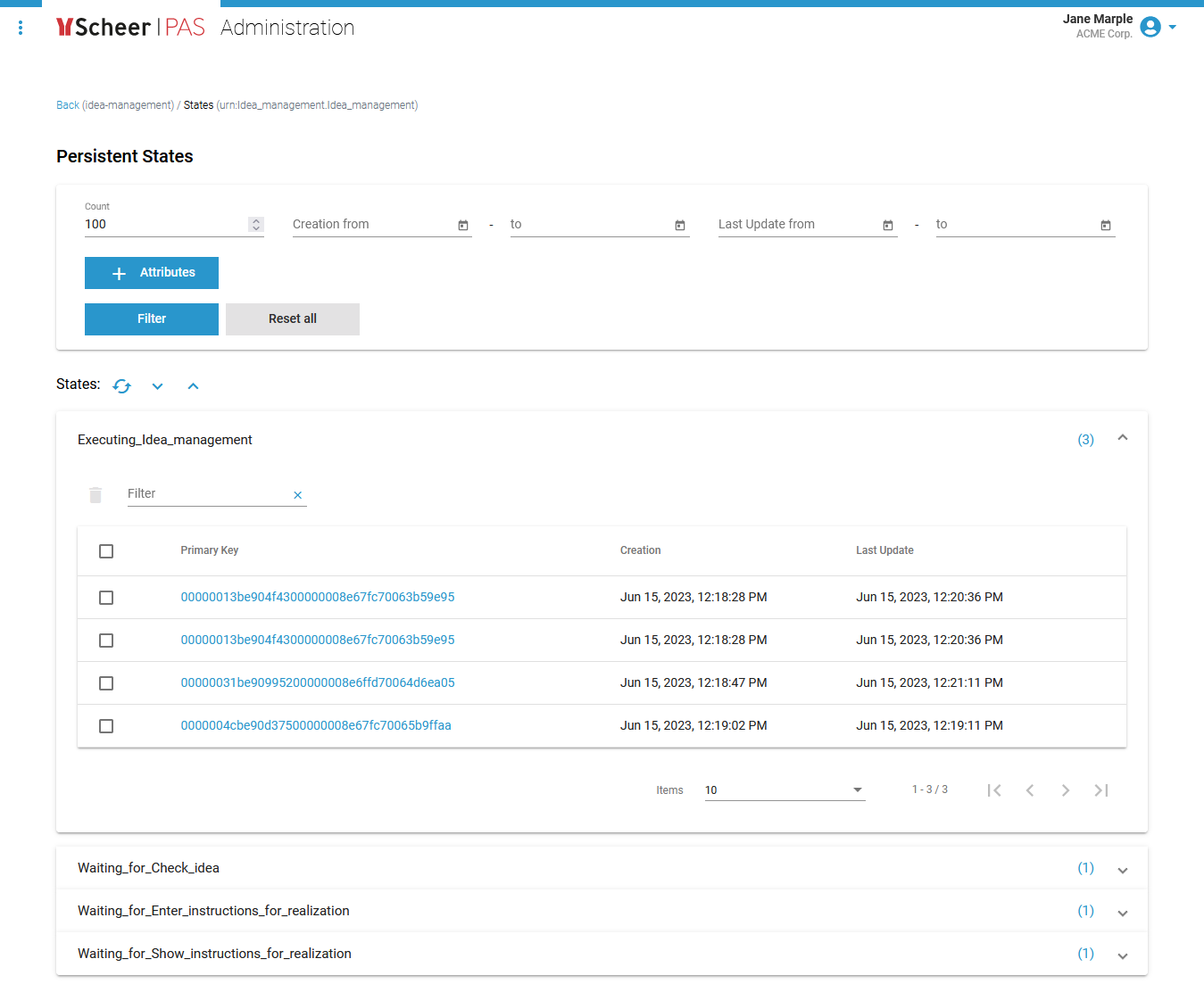Versions Compared
Key
- This line was added.
- This line was removed.
- Formatting was changed.
In the root state machine of a generated process, transitions between states can be automatically, time triggered, or signal triggered. Time triggered and signal triggered transitions can be controlled via the Bridge Integration Platform, or the Bridge API and xUML Runtime API as described on xUML Service Interface PAS Administration.
Time Triggered Transitions and Settings
The xUML service implementing the process features settings to control time triggered transitions.
| Setting | Description | Allowed Values | |
|---|---|---|---|
| holdTime | Specify a period of time the process will reside in state Done after the process has been finished. | A valid time duration as specified on Time Durations. | |
| autoRetry | Specify whether the root state machine should trigger a retry of the erroneous process step after the period of time defined in autoRetryTime. | true | Retry process step where the error occurred. |
| false | No auto-retry (default). | ||
| autoRetryTime | Specify a period of time to wait before triggering an auto-retry of a process in state Error. | A valid time duration as specified on Time Durations. | |
You can change these settings:
| Container Deployment | In the PAS Administration in the Configuration tab of the corresponding service. This is described in more detail on Adapting the Configuration of Containerized xUML Services. |
|---|---|
| Integration Deployment | On the Bridge as described on xUML Service Settings. |
In short, send a GET to |
Signal Triggered Transitions
The Persistent State tab of the Bridge section (PAS Administration > service details) lists all processes and their corresponding states.:
 Image Removed
Image Removed
 Image Added
Image Added
In the details view of a persistent state objectHere, you can inspect the process and state details, and trigger available signals . In the screenshot above, you can see a process in Error state. You can trigger a retry by sending OrderApprovalRetry, or abort the process by sending OrderApprovalAbort.or a retry via the corresponding icons:
 Image Added
Image Added
Alternatively, you can use the xUML Runtime API to send those signals. This is described in more detail on xUML Service Interface.
Regarding the example above, you could send a POST request to /pstate/classes/OrderApproval/objects/00000e8477.../signals/OrderApprovalAbort if you wanted to abort the process.